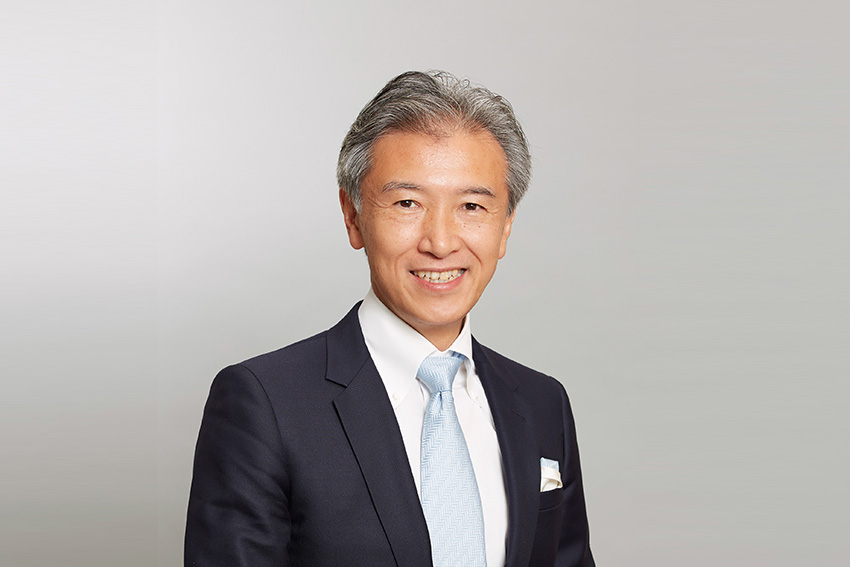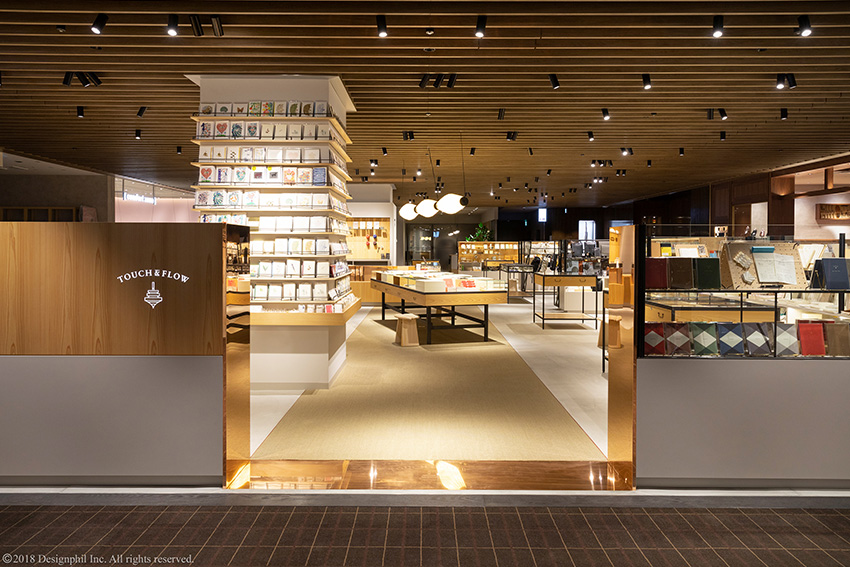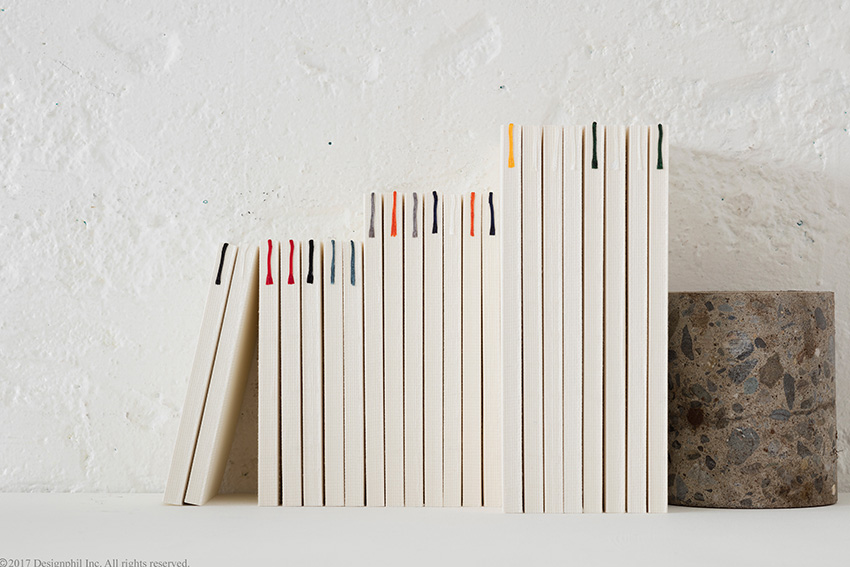Designphil goes that extra mile to design and manufacture stationery paper products that inspire their customers.

We want to begin by asking you about the current global and domestic market trends. One of the issues that the international media has been covering is Japan’s demographic decline. This issue is putting pressure on Japanese companies be it from supply chain bottlenecks or difficulties in hiring staff. It is estimated that by 2040, Japan will face a shortage of over ten million workers. From your perspective, to what extent must Japanese companies begin to look abroad to try to solve the challenges that they are facing?
First of all, the shrinking market is inevitable due to the demographic change that Japan is going through. As a result, a lot more Japanese companies are looking to the overseas market to ensure their survival or to expand their business. More and more companies are looking at foreign markets.
Is this something that is relevant to your business in particular?
Yes, this is part of our business strategy. In 2019, we established our US subsidiary Designphil America Inc., and we have also invested a lot of time and money into our distribution networks in Asia, North America, and Europe.
Another challenge Japan is facing is sustainability. The UN Sustainable Development Goals, launched in 2015, have pushed many companies to look at ways to reduce their environmental impact, be it in their manufacturing process or the materials they use. How does the issue of sustainability impact your business?
Paying attention to sustainability is crucial in our business strategy. We need to be meticulous in selecting materials and ingredients. Our company has made significant efforts to reduce the use of plastic in both packaging and products. Given our extensive handling of paper products, we recently obtained FSC certification, contributing to forest conservation and enhancing our corporate image through environmental consideration. Additionally, we quantify the environmental impact of our production processes and strive to reduce it. We believe that sincerely addressing sustainability is essential for the international expansion of our business in the future.
When it comes to material selection, there are innovations such as cellulose nanofiber (CNF) which is a material that is being used as an alternative to plastic, for example in the automotive industry for bumpers. Writing materials especially from a brand such as yours require high-quality fresh paper. Is the introduction of recycled materials or plant-based materials feasible for your business model now or at some point in the future?
Yes, we have introduced some reusable paper and plant-based products into our operations. However, the quality is not always guaranteed. That can be an issue when using these alternative materials.
Do you see a point in the future where that could be overcome? Is it just a matter of the technology not being advanced enough?
Yes, that is something that we are trying to overcome.
Another factor to consider when it comes to stationary is the issue of new technologies. In the modern world, digital technologies have been replacing the pen, which is obviously creating challenges for stationary companies. Your brand really focuses on maintaining a connection to more traditional writing styles. For example, you offer products such as your TRAVELER’S notebook and your various letter products, which are aimed at encouraging a culture of handwriting rather than the use of digital tools. What are the challenges and opportunities that this transition to digital is posing to your company?
I believe that writing a letter in person is very important. Digital technologies are very fast and efficient. There can be no question about that. However, on the other hand, handwriting is also important. It is proof of the time and effort a person puts into the receiver of the letter. The person does not simply copy and paste, but rather they spend time writing. This aspect of communication is very important. It is personal, which makes it special. Also, people like to use their own special pens for signatures.
The concept of digital overtaking analog has not entirely happened yet. In the record industry, for example, digital MP3 has become very popular, but vinyl has seen historic sales in recent years. The digital watch was introduced in the late 1980s, but mechanical watches are still the epitome of high-quality. In this regard, do you think there will be a return to tradition and handwriting will become more popular again?
Yes, I think so. Handwriting is now a hobby or personal interest. However, it is not on the course of extinction. People really appreciate receiving postcards, letters, or even sticky notes with messages. If somebody takes the time to write to you, you appreciate it and are more likely to address it.
Staying on the topic of technology, the COVID-19 pandemic moved a lot of commerce from physical brick-and-mortar stores to online and e-commerce. Even after the pandemic finished, many of these brick-and-mortar stores remained closed. We know that your company has a long history of e-commerce, with your KNOX Online Shop being established in 2000, almost 25 years ago. Could you talk a little about the advantages that e-commerce platforms provide for your business?
Nowadays, e-commerce is very important as it is an effective sales channel. It makes it easier to share the story behind a brand, which can be viewed as a value statement. Companies can inform customers about their brand’s functionality. E-commerce also provides us with a way to introduce the company to new customers and communicate the different aspects of our brands to them.

On top of your e-commerce platform, you also have your physical stores. How do they relate to each other? You mentioned that you want to bring your story to people through your online store. What are the synergies you have been able to create with your e-commerce platform and the physical stores that you maintain?
Most of our customers tend to visit our physical stores and check our e-commerce platform. They want to understand more about what they are paying for. The physical stores allow them to touch and use our products or check their weight. Our users are very particular about the texture of our products and how easy it is to write on paper. They like to go to the physical stores and try some samples to ensure they are comfortable with what they are purchasing. Physical stores also serve as a medium that offers visitors intangible information unique to the analog experience, such as interactions with staff, the atmosphere, sounds, and scents. While it requires effort, we consider physical stores an essential channel for branding that delivers value by combining products and experiences.

Can you incorporate the feedback you receive at your physical stores into your design in the future?
Feedback is very important. We receive feedback through email and user surveys. This allows us to understand our customers' needs, which we can use to improve our products.
Your company has had many brands and sub-brands since its foundation in 1950. Are there any particular sub-brands you see as having a lot of growth potential in the future, or are there any new sub-brands you are thinking of introducing that you would like to share with our readers?
We are currently working on some new sub-brands. However, they remain confidential, and I cannot share them at this time. We see a lot of growth potential in the future especially when it comes to our TRAVELER’S COMPANY. This brand has seen a lot of growth in the past 18 years and continues to grow today. It is a casual notebook for daily life rather than a notebook used for business.
MIDORI is an original brand we released in 1950. It also has a lot of growth potential for the future. The same goes for PLOTTER. We believe that all of the brands we invested in have potential as they are for personal use, and there is high potential in the lifestyle market.

When it comes to the manufacturing process of your different brands, you can merge both modern printing and processing machines for your large volume whilst also maintaining a connection to the craftsmanship approach through the use of traditional methods such as letterpress and foil stamping, where leather is made by hand. Could you describe the quality control process you have to match the quality of your mass-produced products with your more traditional handmade items?
We invest as much as possible in digital technology to ensure the quality of our processes. However, the most important factor in quality control is communication with people on the floor so that they know the importance of the process when carrying our message to the consumers. This relates to concept talk and involves the inclusion of people’s ideas within the production process, keeping quality control high.
How do you ensure quality when managing your operations overseas in places such as Thailand where TRAVELER'S notebook leather covers are produced and where there may be cultural differences?
That can sometimes be difficult. It requires the producer to go and spend time at the location with the local workers to ensure they understand the requirements.
This is a theme we have seen repeatedly during our interviews, with the presidents speaking about the importance of partnerships not only for acquiring new knowledge but also for opening new markets. Do you have plans to establish new partnerships in the future?
Collaboration is very important for our business and something that we do on a daily basis. Companies with which we have collaborated include STARBUCKS RESERVE® ROASTERY TOKYO, Hoshino Resorts, Tokyobike, Ace Hotel, and EAST JAPAN RAILWAY TRADING CO., LTD.
Are you looking to expand your partnerships? Is there a certain type of partner with whom you would like to work?
We continuously receive requests from people who would like to work with us to create special products so that we may expand our partnerships in the future.
Another facet of your business is that you manufacture products for other companies. We saw on your website that you have a broad range of novelty items, from stickers to notebooks, for example. Of course, adapting to the needs of many different companies and stakeholders poses many challenges. How are you able to adapt your design process to these varying customer requirements?
From an ecological standpoint, we are trying to make products that people can use for a long time. Our premium incentive is to make something very special that touches people’s hearts. We do not want to make products that are directly dumped in the trash can after a short period. Rather, our products are designed to last two or three years and even longer for leather goods. We spend a lot of time in discussions with our clients to decide on the concept or message that the product will carry. Our team is the creative section for our clients. Understanding corporate clients and their needs is very important. Communication is key, and we always aim to produce something that will last longer.
This is reflected in your partnerships such as the project you did with Japan Rail for the Shinkansen. It seems to be a campaign that is not just a one-off event. Is this something that you consider when choosing your partnerships?
It does not necessarily mean that we can cater to all the companies willing to partner with us. Rather, we need to be on the same page, and our strengths must match their needs. We are selective about the companies that we partner with. We receive contact from advertising agencies and mass-campaigning products. However, we do not often sign a contract with them even though it may be good business for us.
When it comes to partnerships, we are curious to understand the mindset you have and where you can see new growth potential. One example would be partnering with Hoshino Resorts, where people could write some notebooks and letters about their trip. Which lifestyle segments do you see opportunities in moving forward?
We currently have two business segments. The first is our original brand development and the second is our commercial department which caters to entities and companies and carries out ODM for them. Our collaboration with EAST JAPAN RAILWAY TRADING Co., Ltd. fits this commercial category as we provide OEM services. However, Hoshino Resorts and Ace Hotel are collaborations involving our own brands.
We know that you are not only focused on Japan but you are also focused on the overseas market with your subsidiary in the US, and you also export to Europe and Asia. Are you looking to expand your overseas operations through new subsidiaries or partners, and if so, are there any specific countries or regions that you have identified as a target?
At this point, we do not plan to open offices overseas in addition to our US operations. Our US entity hires local talent as needed and operates very efficiently. We are currently focused on strengthening our organizational foundation in the US.
Do you have any plans to look for new distributors to open up new markets?
We receive contact from many distributors who are interested in distributing our products. However, we are very careful in signing agreements since our concepts need to be clearly understood and displayed correctly. For example, when it comes to our TRAVELER’S COMPANY, we have partnered with shops across the globe. However, we are strict when deciding whether a shop meets our criteria since branding and storytelling are very important components of our products.
In terms of countries or regions, we know that you distribute to more than 47 different countries and regions. Are there any new countries or target markets where you see potential?
I do not have a specific country in mind at this moment. However, we want to continue to distribute our products all over the world.
If we were to come back and interview you for a second time on the last day of your presidency, is there a personal goal or ambition that you would like to have achieved by then that you could share with us in that second interview?
When it comes to our business, I want to grow our overseas market shares. I aim to grow our overseas market share to 30% within 10 years and ultimately to 50% of our sales. Currently, the overseas market represents 13% of our total sales. Increasing this to 50% will help us become a globally competitive company. I also want our company employees to continue working creatively. Finally, on a personal note, I would like to travel around the world. That is my dream.
About DESIGNPHIL Inc.
DESIGNPHIL (headquarters: Shibuya, Tokyo, president: Ichiro Aida) is a design company that inspires greater enjoyment of daily life and suggests new ways to live through design. With two core businesses, Lifestyle Design, and Commercial Design, we are developing various brands and services.
Brands:
MIDORI, KNOX, TRAVELER’S COMPANY, PLOTTER, TOUCH & FLOW
For more information, visit their website at: https://www.designphil.co.jp/english/
0 COMMENTS